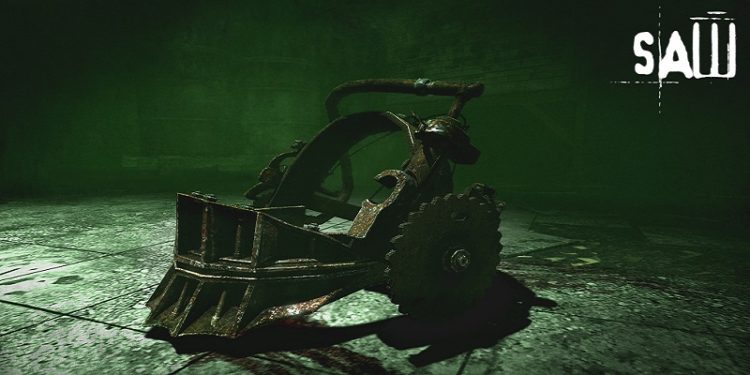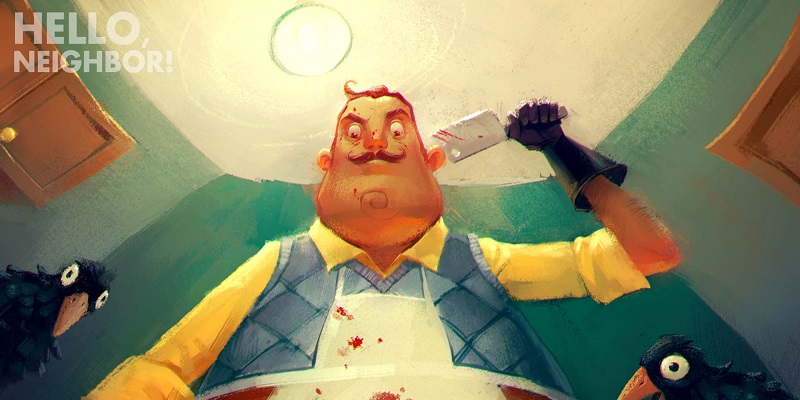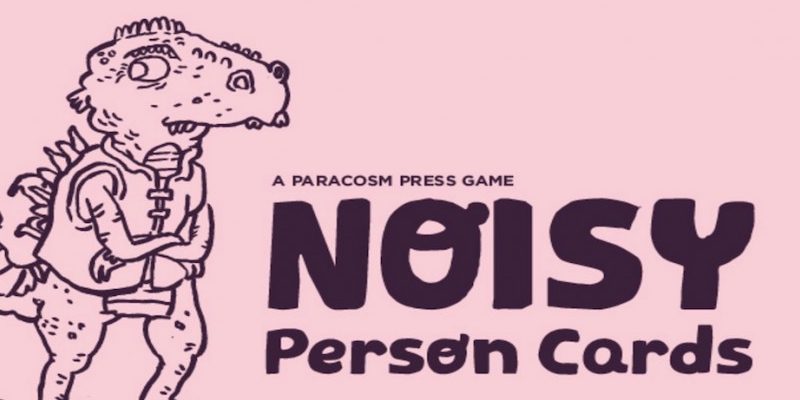Top ways to terrify your players, Part 3

(Author’s note: I thought I’d take a break from my “Plants” series to give a series on the tropes in horror, as it’s appropriate for Halloween. Enjoy)
What does the ‘Last of Us’ video game, ‘Paranormal activity’ movie franchise, Dragon Head, and ‘All Flesh Must be Eaten’ all have in common? They are all different genres of horror: video game, movie, stories, manga, and tabletop RPG. Each of these different media have a different way of making its viewers, readers, participants experience horror in a different way. By examining the ideas contained them, we can determine what makes an effective horror tabletop RPG game to terrify your players.
In part 1, we examined horror and suspense. In part 2, we explored the concepts of terror and apprehension. But these aren’t the only concepts applicable here. Another concept that appropriate is disgust, which is is an emotional response of revulsion to something considered offensive, distasteful, or unpleasant. Among the types of things that many people are disgust are (this list comes from Wikipedia):
- body products (feces, urine, vomit, sexual fluids, saliva, and mucus);
- spoiled foods;
- animals (fleas, ticks, lice, cockroaches, worms, flies, rats, and mice);
- hygiene (visible dirt and “inappropriate” acts [e.g., using an unsterilized surgical instrument]);
- body envelope violations (blood, gore, and mutilation);
- death (dead bodies and organic decay);
- visible signs of infection
Fear is another emotion that is apt in a DM’s attempts to terrify their players. While there is the frightened condition in D&D, that is a game mechanics type of a thing. DMs can find out what frightens their players, and with permission, bring said topics into the game. Conversely, the DM could present situations that the characters would be afraid of because of something in their background, and bring those fears to life.
It bears repeating again that, it should be noted that with any of these tips, the players need to be in on the idea of what’s going on, i.e. that they’re playing a horror campaign, and willing to put aside (or as one reader suggested, embrace) their suspension of disbelief. Without this as the basis, none of these tips will be as effective.
How can DMs capitalize on these emotions in their players? By examining the environment, giving monsters unique abilities, implementing morale, making items scarce, building suspense, and having it never truly be over.
 Environment (Part II)
Environment (Part II)
Another thing way to terrify your players is to set up the following things:
- Puzzles: The characters need to get from point A to point B. There’s stuff laying around the environment to help them get there. Sometimes things may need to be moved from one point to another. In the survival-horror game “The Last of Us” the characters have to move ladders and boards to get from place to place. In a roleplaying game, instead of just moving things and concentrating on moving forward, characters may have to consider ways of moving back to where they were to retreat and prevent the enemy from following until they can regroup/ heal themselves. Another issue that needs to be explored is a time limit. The players might be trying to escape a hoard of zombies and the area where they’re at is flimsily protected and they need to solve the puzzle in order to escape. Note that puzzles shouldn’t be there for the sake of having puzzles there. They should be connected to the plot somehow.
- Stashes can be implemented in a variety of ways. They may have unattended items on shelves, boxes, storage lockers, or places such as underneath cabinets. In such a game a “loot everything” mentality exists; anything unattended is fair game. Unfortunately, most DMs are ill-equipped to provide that level of detail to their world. To help with this daunting task of having things available to give to the players who take the time to search everything, DMs can develop a table of items to roll on to give to the players. To make things even scarcer, maybe have some of the monsters be in the middle of raiding or using the stashes as the PCs show up. Note: while these stashes shouldn’t be everywhere, nor should they be particularly well-stocked, they should be prevalent enough to keep the players searching for them, and, not having to constantly fumble around for a makeshift weapon.
- Makeshift Items: In the recent horror-survival video game “The Last of Us” they had a particularly good system. Due to it being 20 years after the Infected Apocalypse, buildings were in a state of disrepair. Many times, in buildings the characters would find loose bricks, bottles, and 2X4s and metal poles. The problem with their system is that the makeshift items broke far too easily. In high tension moments in the game, it’s not unreasonable to roll to see if a board breaks, but under “normal use,” in fighting standard enemies it really shouldn’t unless enemies are targeting it directly or the PCs are using it in foolish ways. This is especially true when having something sturdy like a metal pipe. Note: many of these types of games allow the characters to combine ingredients or inventory in order to make something new. There should be several “standard” things able to be combined, but good DMs should allow for player creativity as well. If they have an appropriate skill in crafting give a bonus to making it. If they’re trying to concoct something in a hurry, give a penalty to crafting.
Give Monsters Unique Abilities
Another way of terrifying players is to give the monsters in your games different skills, abilities, and allies.
If you run a game that uses a skill system, maybe the monsters have skills that the PCs either don’t have or know of or can’t use as effectively as the monsters can. If you’re using a game system that uses classes, what classes would be appropriate and would work synergistically with the abilities they already have? What spells, powers, or abilities could you add or take away to the monsters to make them unique to your setting or this encounter?
- Perhaps the monster(s) have developed “fear effects” that they normally would not have that can cause the PCs to panic, fleeing from them instead of fighting them.
- Perhaps the monster(s) have developed some sort of “reality warping” powers that cause them to appear differently than what they really are, or cause their attacks to be more devastating than they ordinarily would be
- Perhaps the monsters could “taint” those that it attacks, so that if killed or injured by the monster that they become one – and this is not an ability the monster would normally have.
- Perhaps in your world there are several moons, and each one empowers a different type of were creature (lycanthrope) or undead. Perhaps there are no moons and your world’s were (lycanthropic) creatures use some other signal to be able to change or it may even be a thing of sheer willpower
- Perhaps your vampires are so powerful that they can walk around during full daylight or have spells which protect them from the sun.
Morale
Morale another way to help terrify your players. Originally, it is a mechanic that was introduced in AD&D that told you when foes were likely to break and run or give up instead of just fighting to the death. It helps define more specifically how vicious/cowardly a monster or NPC (or PC ally) is. If the PCs face overwhelming odds, this can help tell them when it’s appropriate to flee and regroup. Maybe the concept can be split into two factors – one which determines how likely something is to attack in the first place, an aggression value – and one which determines how likely something is to keep fighting. This website suggests the following changes to the old morale system.
- Morale DC 20/10: isn’t going to attack unprovoked, will bail about half the time if it’s in a fight that’s not going well (most animals might fit in here.)
- Morale DC 10/0: Somewhat likely to attack you, but once the fight starts there’s no going back! Maybe a good value for those berserkers in T1.
- Morale DC 20/20: Not gonna fight, always gonna run, like a peasant or small herbivore or my dog.
- Morale DC 10/0: Going to attack half the time, will never flee or surrender
- Morale DC 7/15: Likely to attack, but not likely to stick with it (many ambush predator types fit into this category, like my cat)
- Morale DC 5/5: Aggressive and elite critter
- Morale DC 0/0: Stone golem, crush them!

Scarcity
To terrify your players, *everything* of importance needs to be scarce, and most of the time logically so.
- Weapons & Ammo: in places that are facing a disaster, or currently in a disaster, the first thing that people would snatch up would be these items because it’s a way to protect themselves against whatever dangers are out there. If you want a truly desperate situation, the only things available to make weapons would be makeshift, as all the guns/ ammo are gone. You can also make it where the enemies have guns and ammo and until you take one of them out you don’t. To make things even trickier, the enemies could be using weapons that the characters aren’t proficient in their use and if they try to use them are severely penalized or are not able to use at all because they’re not appropriately sized to use them.
- Health Items: If you’re running from an apocalypse, one of the things you’re going to want to stock up on is bandages, rubbing alcohol, pain medicine, etc.
- Food: while *technically* a health item, I’m listing this separate because while medicine heals you, without food, you soon won’t have the energy or stamina to move. Food also helps medicine work, because it gives the body the ability to heal (or heal faster).
- Safe Areas: In a horror game “safe” is the last adjective you should use. Enemies should be constantly moving, and any safe area should not remain safe for long, unless it’s “home base” and even that should not be free from fear of attack. This lack of safety will, over time, terrify your players.
Suspense Build up
Suspense Build up is another way that DMs can use to terrify their players. If the players know that they are in a horror game, they should be looking for something to jump out and attack unexpectedly. Alternating this type of tension buildup and resolution is a classic way of developing horror. For more on this see ‘So You Want To Write A Survival Horror Game’ on tvtropes.org

It’s never REALLY “over” in a Horror game.
Look at some of the most classic horror films and video games of all times. Something happens and they’re resurrected. Maybe one of the PCs disappeared for awhile and had a suggestion implanted in them and they’ll resurrect the evil. Maybe some part of the organization’s infrastructure remains and they vow revenge on the PCs. Maybe one of the PCs get contaminated, tainted, somehow and become the new evil themselves, and so the cycle begin anew. The possibilities are endless.
To terrify your players, the idea is to use things that may turn their ideas of what standard RPGs do, showing the players that they are powerless, and their actions can affect the world around them in startling and unsettling ways. Use these ideas to shake up your players and make the terror more real for them.
As always, feel free to like, comment and reshare!




